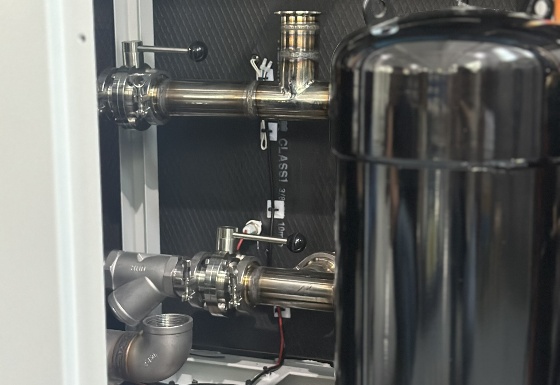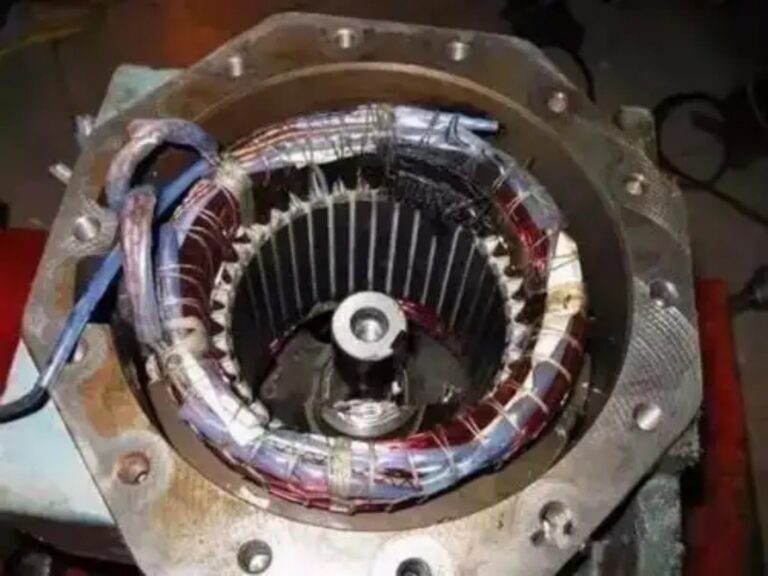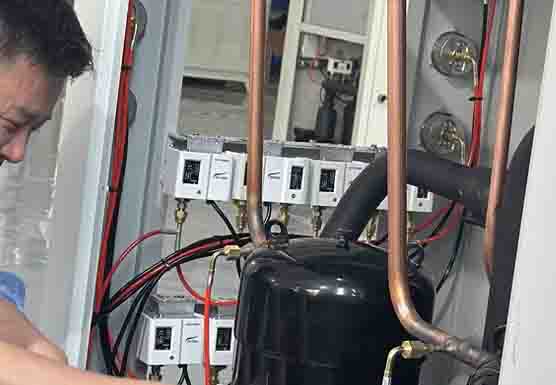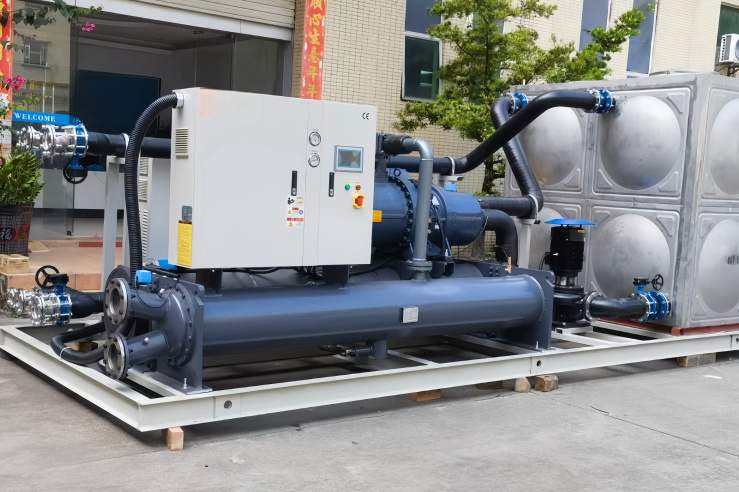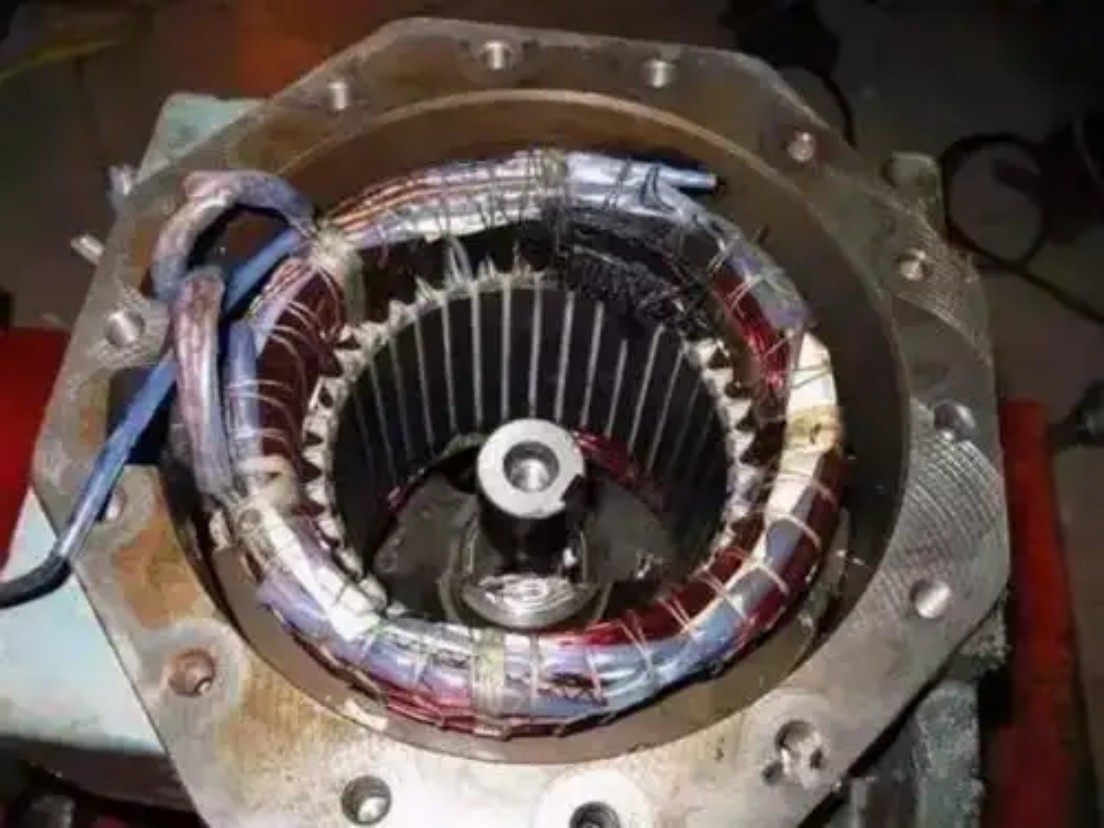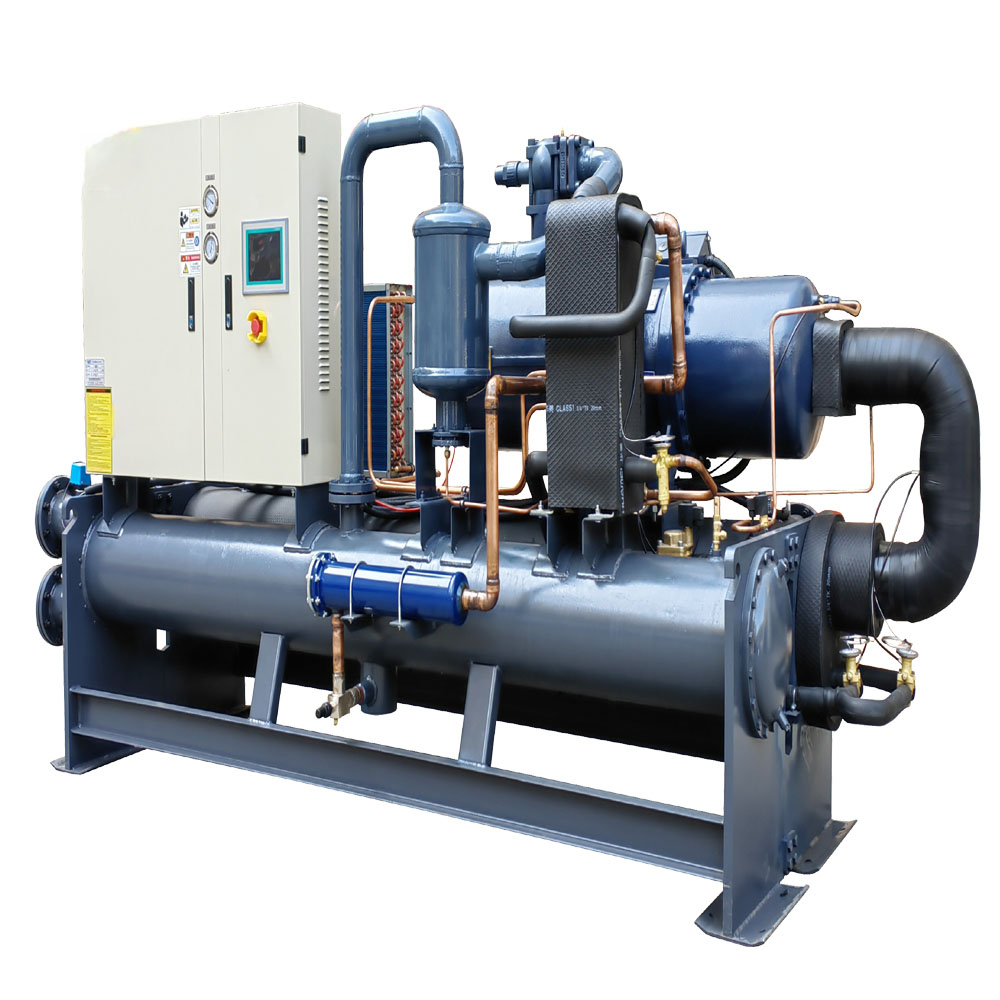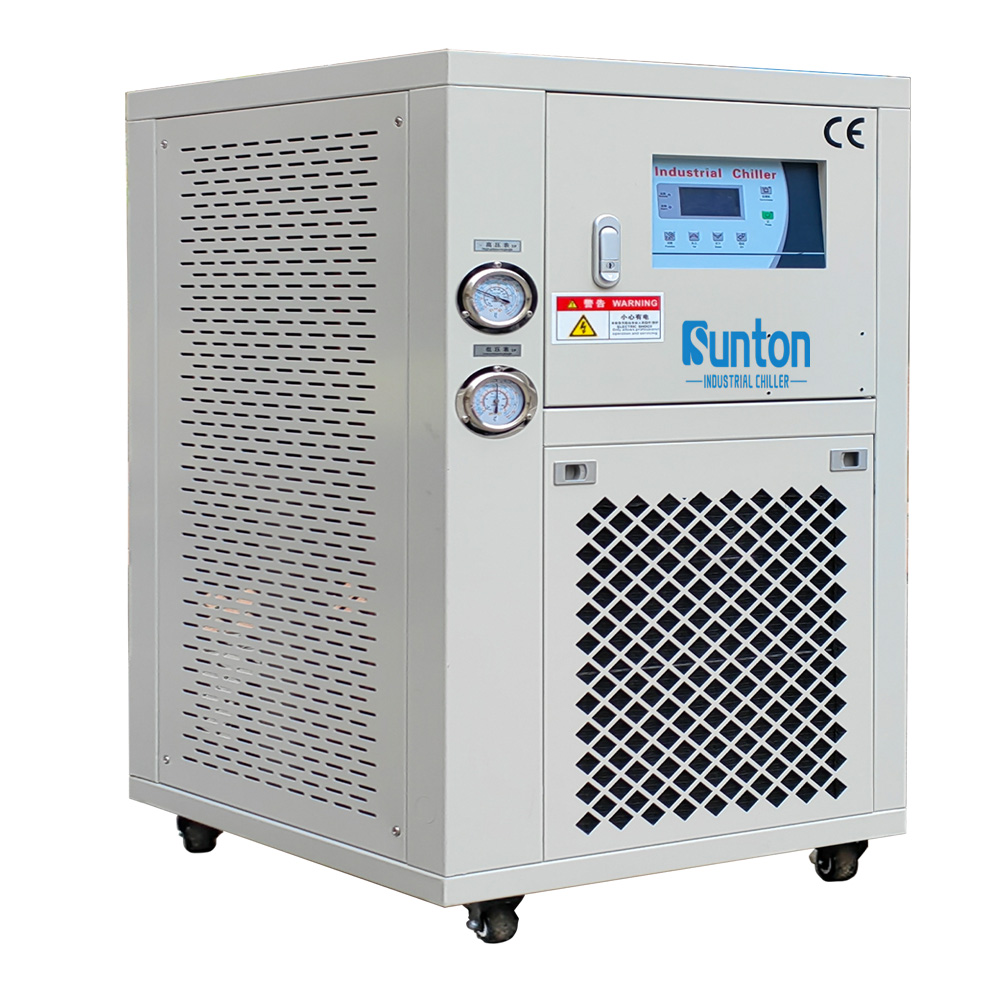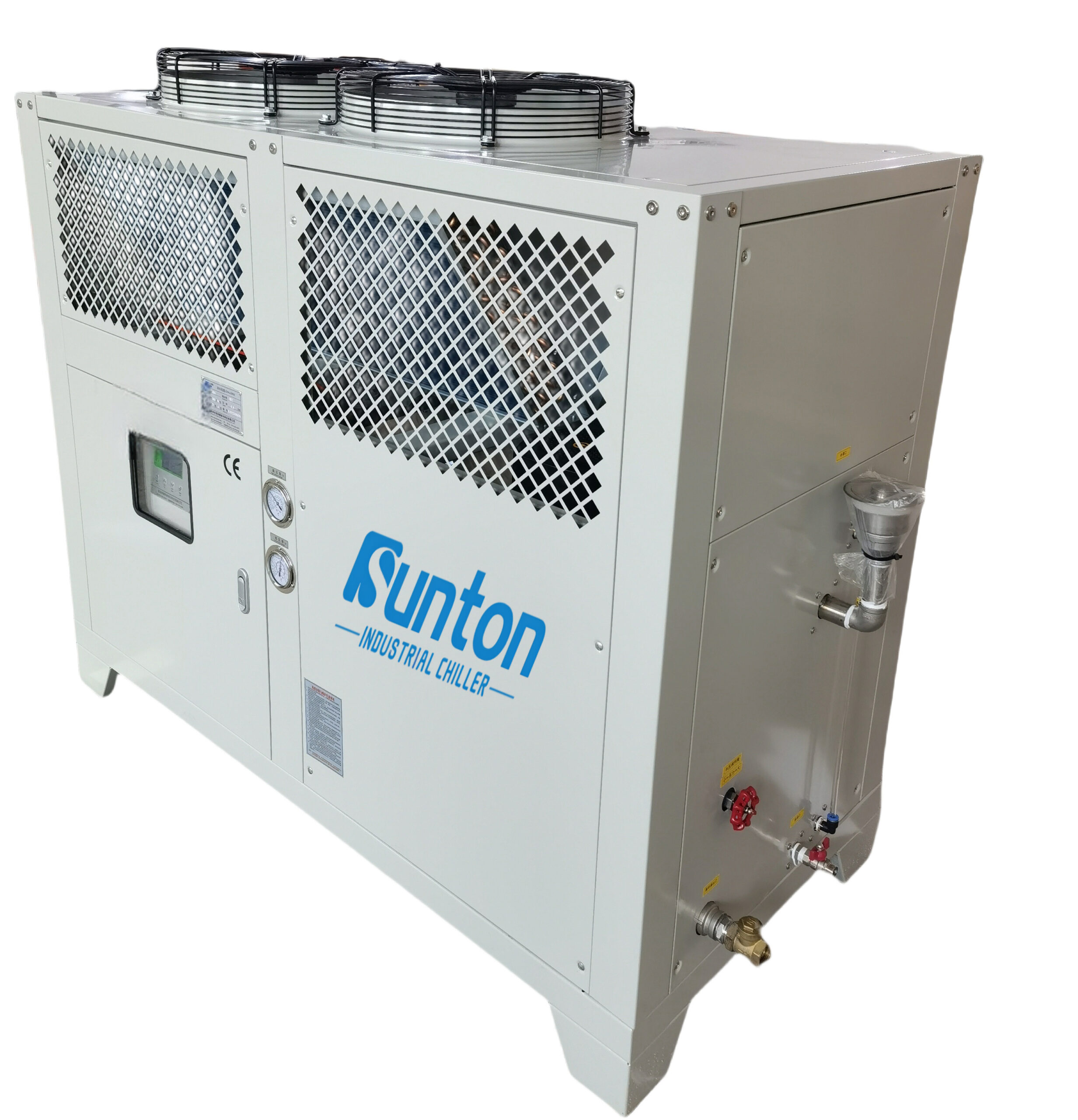-
Даліншань Індастріал Гуандун
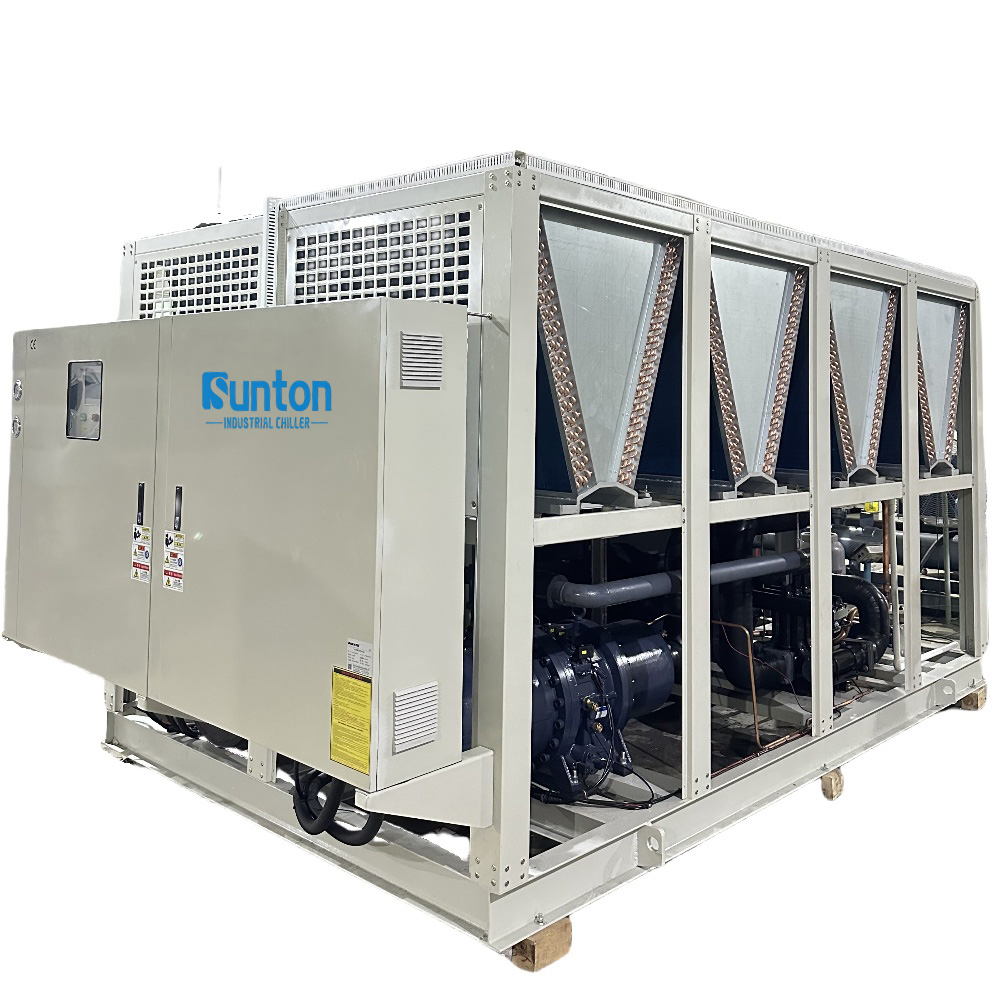
охолоджувачі молочного молока – системи охолодження гліколевого молока на фермах для резервуарів
Революція в молочному виробництві: основний посібник із систем охолодження молока
У цій статті досліджується критична роль охолоджувачів молока в молочній промисловості, зосереджуючись на тому, як ці системи забезпечують якість і безпеку молока від ферми до столу. Розроблений для працівників пластмас і гуми, машинобудування, харчової промисловості та виробництва напоїв, хімічної та фармацевтичної, електронної, лазерної, поліграфічної, медичної промисловості, а також для лабораторій, дослідницьких установ і центрів обробки даних, цей посібник пропонує вичерпний огляд технологій охолодження молока. Він має на меті підкреслити, чому інвестиції у високоякісну холодильну систему є не лише вигідними, але й необхідними для підтримки цілісності продукту та ефективності роботи. Незалежно від того, чи є ви молочним фермером, працюєте на переробному заводі чи берете участь у широкому промисловому застосуванні технологій охолодження, розуміння нюансів молочних холодильних установок допоможе вам приймати обґрунтовані рішення, покращуючи роботу та якість продукції.
Зміст
Яке значення має швидке охолодження молока на молочних фермах?
Швидке охолодження молока має першочергове значення в молочній промисловості. Відразу після доїння сире молоко виходить із корови при температурі близько 95°F (35°C). Щоб зберегти якість і безпеку молока, дуже важливо охолоджувати його до температури нижче 40°F (4°C) якомога швидше. Цей швидкий процес охолодження значно пригнічує ріст бактерій, забезпечуючи збереження свіжості молока та подовжуючи термін його зберігання. Добре відомо, що популяція бактерій може подвоїтися кожні 20 хвилин, якщо залишити молоко при кімнатній температурі. Це не лише впливає на смак і консистенцію, але й створює ризик для здоров’я споживачів.
Крім того, швидке охолодження молока допомагає зберегти його природні ферменти та поживні речовини, гарантуючи, що молоко збереже свою поживну цінність і профіль смаку. Молочні фермери розуміють, що якість їхнього молока безпосередньо впливає на прибутковість. Молоко, яке не відповідає стандартам якості через неправильне охолодження, може бути забраковано переробниками, що призведе до фінансових втрат. Таким чином, інвестування в ефективні системи охолодження молока є не лише питанням контролю якості, але й життєво важливим економічним фактором для молочних ферм.
Як працюють охолоджувачі молочного молока?
Охолоджувачі молочного молока працюють за принципом охолодження для ефективного охолодження молока. Ядро холодильної системи складається з компресора, конденсатора, розширювального клапана та випарника. Процес починається, коли компресор створює тиск у холодоагенті, підвищуючи його температуру. Потім цей гарячий газ під тиском переміщується до конденсатора, де охолоджується та конденсується в рідину, виділяючи при цьому тепло. Далі рідкий холодоагент проходить через розширювальний клапан, де швидко розширюється та охолоджується. Потім холодний холодоагент проходить через змійовики випарника. У випарнику холодоагент поглинає тепло від молока, спричиняючи його охолодження. Після поглинання тепла холодоагент повертається в компресор, і цикл повторюється.
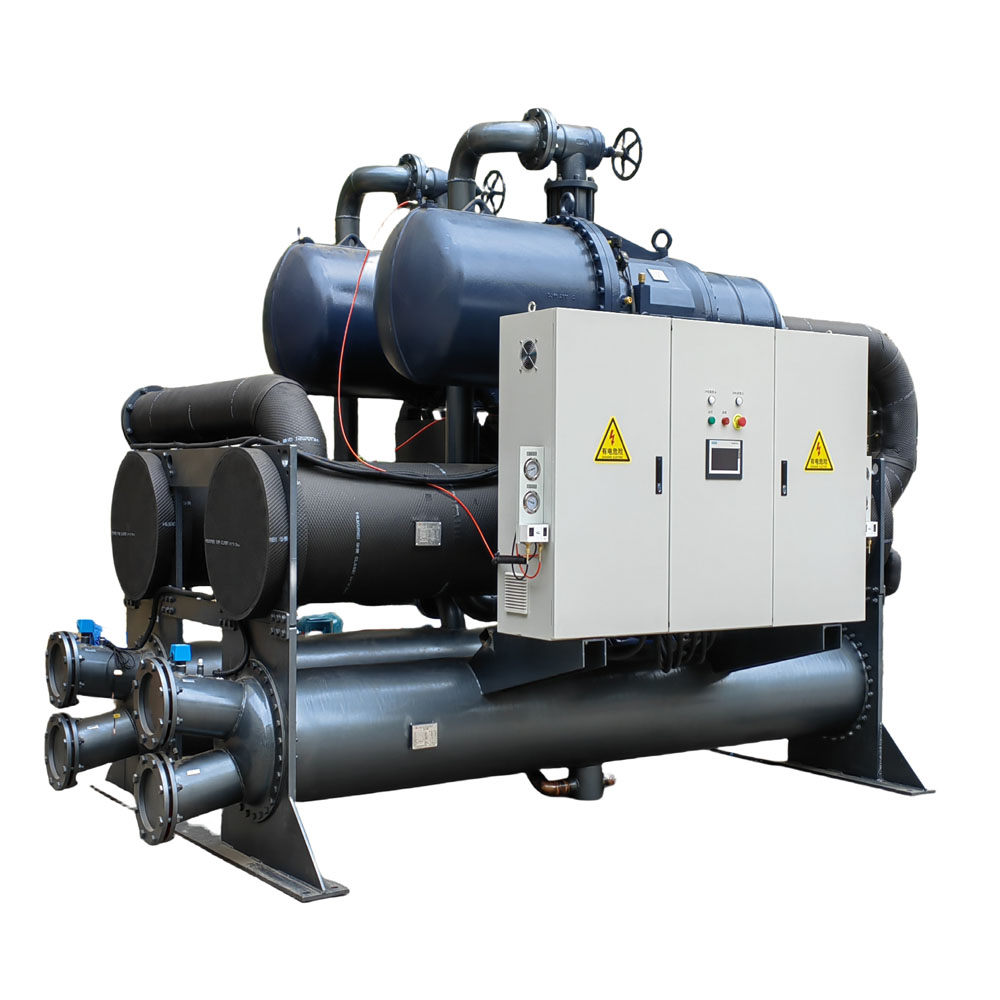
У системах прямого розширення випарник безпосередньо контактує з резервуаром для молока, забезпечуючи ефективне охолодження. Інші системи використовують пластинчастий охолоджувач або теплообмінник для непрямої передачі тепла від молока до холодоагенту. Ефективність охолоджувача молока залежить від його потужності охолодження, типу холодоагенту, що використовується, і конструкції системи. Вдосконалені холодильні машини також можуть містити такі функції, як рекуперація тепла, яка використовує тепло, отримане від молока, для нагріву води, таким чином підвищуючи енергоефективність. Тут ви можете дізнатися більше про Гвинтовий холодильник з водяним охолодженням.
Які є різні типи охолоджувачів молока?
Існує кілька типів молочних охолоджувачів, кожен з яких підходить для різних розмірів ферми та робочих потреб. Чиллери прямого розширення зазвичай використовуються для невеликих операцій. Вони пропонують ефективне охолодження, але їхня ефективність може зменшитися із збільшенням обсягів молока. Для середніх і великих молочних ферм перевагу часто надають гліколевим холодильним машинам. Ці системи використовують суміш води та гліколю, охолоджену холодильною системою, для охолодження молока через пластинчастий охолоджувач або теплообмінник.
Іншим типом є система миттєвого охолодження, яка може охолоджувати молоко майже миттєво, коли воно проходить через низку охолоджених пластин. Вони високоефективні для великомасштабних операцій, забезпечуючи швидке охолодження молока до бажаної температури. Крім того, існують чиллери з водяним і повітряним охолодженням. Системи з водяним охолодженням використовують воду для охолодження конденсатора, тоді як системи з повітряним охолодженням покладаються на повітря. Вибір між ними залежить від таких факторів, як наявність води, температура навколишнього середовища та витрати на електроенергію.
Чому гліколь є кращим вибором для систем охолодження молока?
Гліколь віддають перевагу в системах охолодження молока насамперед через його нижчу температуру замерзання порівняно з водою. Розчин гліколю можна охолодити нижче 32°F (0°C) без заморожування, що дозволяє ефективніше охолоджувати молоко до 34°F (1°C). Ця здатність має вирішальне значення для швидкого охолодження молока та підтримки постійної низької температури.
- Ефективність: Гліколеві системи є високоефективними, оскільки гліколь швидко охолоджує молоко, скорочуючи час, протягом якого молоко піддається впливу температур, які можуть сприяти росту бактерій.
- Контроль температури: Точний контроль температури є ще однією перевагою. Системи з гліколем можуть підтримувати постійну температуру, забезпечуючи рівномірне охолодження всієї партії молока.
- Гнучкість: Гліколеві чиллери також універсальні. Їх можна використовувати в різноманітних конфігураціях, у тому числі з пластинчастими охолоджувачами та резервуарами для насипу, що робить їх придатними для різних установок молочних ферм.
- Рекуперація тепла: У багатьох гліколевих системах використовується рекуперація тепла. Тепло, яке поглинає гліколь під час процесу охолодження, можна використовувати для нагрівання води для інших потреб у фермі, наприклад для очищення та дезінфекції обладнання.
Гліколеві системи представляють собою значні інвестиції, але пропонують довгострокові переваги щодо якості молока, енергоефективності та операційної гнучкості.
Вивчення переваг установок для охолодження молока
Установки для охолодження сипучого молока пропонують ряд переваг для молочних ферм, особливо для тих, які мають великі обсяги виробництва молока. Ці агрегати призначені для швидкого охолодження великої кількості молока та підтримки постійної низької температури, доки воно не буде зібрано для обробки.
Переваги включають:
- Масштабованість: Вони можуть працювати з великими обсягами молока, що робить їх ідеальними для вирощування молочних продуктів.
- Послідовність: Ці агрегати забезпечують рівномірне охолодження, що має вирішальне значення для підтримки якості молока по всій партії.
- автоматизація: Багато холодильних установок для сипучих мас оснащено автоматизованими засобами керування, що дозволяє точно керувати температурою та зменшує кількість ручної праці.
- Енергоефективність: Сучасні охолоджувачі наливних мас спроектовані з урахуванням енергоефективності, включаючи такі функції, як приводи зі змінною швидкістю та системи рекуперації тепла.
Крім того, охолоджувальні установки допомагають фермерам відповідати суворим стандартам якості, які вимагають переробники молока та регуляторні органи. Забезпечуючи швидке охолодження та зберігання молока при правильній температурі, ці агрегати відіграють вирішальну роль у збереженні свіжості та поживної цінності молока.
Як вибрати правильний охолоджувач молока для вашої молочної ферми?
Вибір правильного охолоджувача молока залежить від кількох факторів.
| Розгляд | опис |
| Розмір ферми та обсяг молока | Невеликі ферми можуть вибрати охолоджувачі прямого розширення, тоді як більшим підприємствам можуть знадобитися охолоджувачі з гліколем або системи миттєвого охолодження для ефективної обробки великих обсягів молока. |
| Потужність охолодження | Потужність холодильної установки повинна відповідати виробництву молока на фермі. Важливо враховувати потенційне зростання, оскільки недооцінка потенціалу може призвести до неефективності. |
| Енергоефективність | Шукайте чиллери з високими показниками енергоефективності. Такі функції, як рекуперація тепла, можуть з часом значно зменшити експлуатаційні витрати. |
| Тип чиллера | Подумайте, яка система з повітряним чи водяним охолодженням є більш підходящою, виходячи з умов навколишнього середовища та наявності ресурсів. |
| Бюджет | Збалансуйте початкові інвестиції з довгостроковими експлуатаційними витратами. Хоча більш ефективні системи можуть мати вищу початкову вартість, вони можуть заощадити в довгостроковій перспективі. |
Також бажано проконсультуватися з виробником чиллера або спеціалістом з молочного обладнання, який зможе оцінити ваші конкретні потреби та порекомендувати найбільш підходящу систему. Крім того, враховуйте наявність служб технічного обслуговування та підтримки у вашому регіоні.
Які вимоги до технічного обслуговування охолоджувачів молочного молока?
Регулярне технічне обслуговування має вирішальне значення для забезпечення довговічності та ефективності охолоджувачів молочного молока. Це включає:
- прибирання: Регулярне очищення таких компонентів, як конденсатор, випарник і пластинчастий охолоджувач, запобігає накопиченню залишків молока та забруднень, які можуть вплинути на продуктивність.
- Рівні холодоагенту: Перевірка та підтримка належного рівня холодоагенту має важливе значення для оптимального охолодження.
- Перевірка компонентів: Регулярно перевіряйте такі деталі, як компресори, насоси та вентилятори, на предмет зносу. Негайно замінюйте всі пошкоджені або зношені компоненти.
- Калібрування: Переконайтеся, що датчики температури та елементи керування точно відкалібровані для підтримки точних температур охолодження.
- Професійне обслуговування: Заплануйте щорічне або два рази на рік обслуговування кваліфікованим фахівцем для проведення ретельного огляду та виконання будь-яких необхідних ремонтів або налаштувань.
Належне технічне обслуговування не тільки забезпечує ефективну роботу, але й допомагає запобігти дорогим поломкам і подовжує термін служби холодильної машини.
Енергоефективність та стійкість у охолодженні молока
Енергоефективність викликає дедалі більше занепокоєння в галузі молочного скотарства. Сучасні охолоджувачі молока розроблені з урахуванням екологічності, включаючи функції, які зменшують споживання енергії та мінімізують вплив на навколишнє середовище.
Основні аспекти включають:
- Приводи зі змінною швидкістю: Це дозволяє чиллеру регулювати потужність охолодження залежно від потреби, зменшуючи споживання енергії в періоди низького попиту.
- Рекуперація тепла: Як згадувалося раніше, системи рекуперації тепла використовують тепло, отримане від молока, для нагріву води, зменшуючи потребу в додатковій енергії для нагрівання води.
- Ефективні холодоагенти: Використання холодоагентів із нижчим потенціалом глобального потепління (GWP) може зменшити вплив системи охолодження на навколишнє середовище.
- Розумне керування: Розширені системи керування можуть оптимізувати роботу холодильної машини, забезпечуючи її максимальну ефективність.
Інвестуючи в енергоефективні охолоджувачі молока, молочні фермери можуть скоротити свої експлуатаційні витрати, зменшити свій вуглецевий слід і зробити свій внесок у більш стійку молочну промисловість.
Роль молокоохолоджувачів у забезпеченні якості та безпеки молока
Охолоджувачі молока відіграють ключову роль у підтримці якості та безпеки молока. Швидко охолоджуючи молоко до належної температури зберігання, ці системи запобігають розвитку бактерій, зберігаючи свіжість молока та подовжуючи термін його зберігання. Це не тільки гарантує, що молоко безпечне для споживання, але й допомагає зберегти його поживну цінність і смак. Охолодження молока є найважливішим фактором якості молока.
Крім того, багато сучасних холодильних установок оснащені системами моніторингу та сигналізації, які сповіщають фермерів про будь-які відхилення температури, дозволяючи миттєво вживати коригувальних заходів. Це особливо важливо в регіонах із суворими правилами щодо молочних продуктів, де підтримка належної температури охолодження є обов’язковою.
Інновації та майбутні тенденції в технології охолодження молочного молока
Сфера охолодження молочних продуктів постійно розвивається з постійними інноваціями, спрямованими на підвищення ефективності, стійкості та продуктивності.
Серед ключових тенденцій:
- Удосконалені холодоагенти: Тривають дослідження нових холодоагентів із ще нижчим ПГП, що обіцяє подальше зниження впливу на навколишнє середовище.
- Розумні технології: Інтеграція з системами управління фермою дозволяє здійснювати моніторинг і контроль охолодження молока в режимі реального часу, оптимізуючи продуктивність і використання енергії.
- Відновлювані джерела енергії: Деякі молочні ферми досліджують використання відновлюваних джерел енергії, таких як сонячна або вітрова енергія, для роботи своїх охолоджувачів молока, ще більше зменшуючи свій вуглецевий слід.
- Покращені теплообмінники: Досягнення в конструкції теплообмінника призводять до більш ефективної теплопередачі, покращуючи процес охолодження.
Очікується, що ці інновації ще більше розширять можливості охолоджувачів молока, зробивши їх ще більш ефективними та стійкими в найближчі роки. Наприклад, Промислові охолоджувачі для гідропоніки вже викликають хвилю в аграрному секторі.
поширені запитання
До якої температури охолоджувати молоко на молочній фермі?
Для забезпечення якості та безпеки молоко слід охолодити до температури нижче 40°F (4°C) протягом двох годин після доїння.
Як довго можна зберігати молоко в резервуарі?
Правильно охолоджене молоко може зберігатися в резервуарі до 48 годин перед збором.
Чи можна використовувати гліколеві системи для інших цілей на молочній фермі?
Так, окрім охолодження молока, системи з гліколем можна використовувати для інших потреб охолодження та рекуперації тепла, наприклад для нагріву води для очищення.
Які ознаки того, що охолоджувач молока потребує технічного обслуговування?
Ознаки включають неадекватне охолодження, незвичайні шуми, витоки та підвищене споживання енергії.
Чи існують державні стимули для інвестування в енергоефективні охолоджувачі молока?
Багато регіонів пропонують знижки, податкові пільги або гранти для молочних фермерів, які інвестують у енергоефективне обладнання, зокрема охолоджувачі молока. Зверніться до місцевих сільськогосподарських або енергетичних органів щодо доступних програм.
Як працює пластинчастий охолоджувач у системі охолодження молока?
Пластинчастий охолоджувач використовує низку охолоджених пластин для швидкого охолодження молока, коли воно протікає над ними, забезпечуючи ефективну передачу тепла від молока до охолоджувальної рідини.
Висновок
- Швидке охолодження молока має важливе значення для підтримки якості молока, безпеки та продовження терміну зберігання.
- Охолоджувачі молочного молока, включаючи системи прямого розширення, гліколеві та системи миттєвого охолодження, відіграють вирішальну роль у молочній промисловості.
- Перевага віддається гліколю через його нижчу температуру замерзання, ефективність і точний контроль температури.
- Установки для охолодження сипучого молока забезпечують масштабованість, послідовність і переваги автоматизації для великих молочних операцій.
- Вибір правильного холодильного агрегату передбачає врахування розміру ферми, потужності охолодження, енергоефективності, типу чилера та бюджету.
- Регулярне технічне обслуговування, включаючи очищення, перевірку холодоагенту, перевірку компонентів і професійне обслуговування, є життєво важливим.
- Енергоефективні чиллери з такими функціями, як приводи зі змінною швидкістю, рекуперація тепла та ефективні холодоагенти, сприяють екологічності.
- Охолоджувачі молока мають вирішальне значення для запобігання розвитку бактерій, збереження якості молока та забезпечення дотримання правил безпеки.
- Такі інновації, як передові холодоагенти, інтелектуальні технології, інтеграція відновлюваної енергії та вдосконалені теплообмінники формують майбутнє охолодження молока.
- Інвестиції у високоякісну холодильну систему не тільки вигідні, але й необхідні для підтримки цілісності продукту, ефективності роботи та прибутковості в молочній промисловості.
Пам’ятайте, як підприємство з виробництва промислових холодильних установок ми розуміємо унікальні виклики, з якими стикаються різні галузі промисловості, включно з молочним сектором. Наш досвід і передові рішення для охолоджувачів, наприклад для Охолоджувачі молока для молочної промисловості, Вибухозахищені охолоджувачі, і Гвинтові центральні охолоджувачі з повітряним охолодженням, призначені для вирішення цих завдань. Ми пропонуємо індивідуальні системи, які забезпечують точний контроль температури, енергоефективність і надійність, що має вирішальне значення для підтримки найвищих стандартів якості та безпеки у вашій діяльності. Незалежно від того, чи працюєте ви у виробництві пластмас і гуми, машинобудуванні, харчовій промисловості та виробництві напоїв чи будь-якій іншій галузі, наші холодильні машини забезпечують необхідну ефективність охолодження. Ми запрошуємо вас зв’язатися з нами, щоб обговорити ваші конкретні вимоги та дізнатися, як наші індивідуальні холодильні рішення можуть принести користь вашому бізнесу. Дозвольте нам допомогти вам оптимізувати вашу діяльність і досягти ваших виробничих цілей за допомогою нашої найсучаснішої технології чиллерів. Співпрацюючи з нами, ви отримуєте доступ до передових технологій і команду експертів, які забезпечать ваш успіх.
